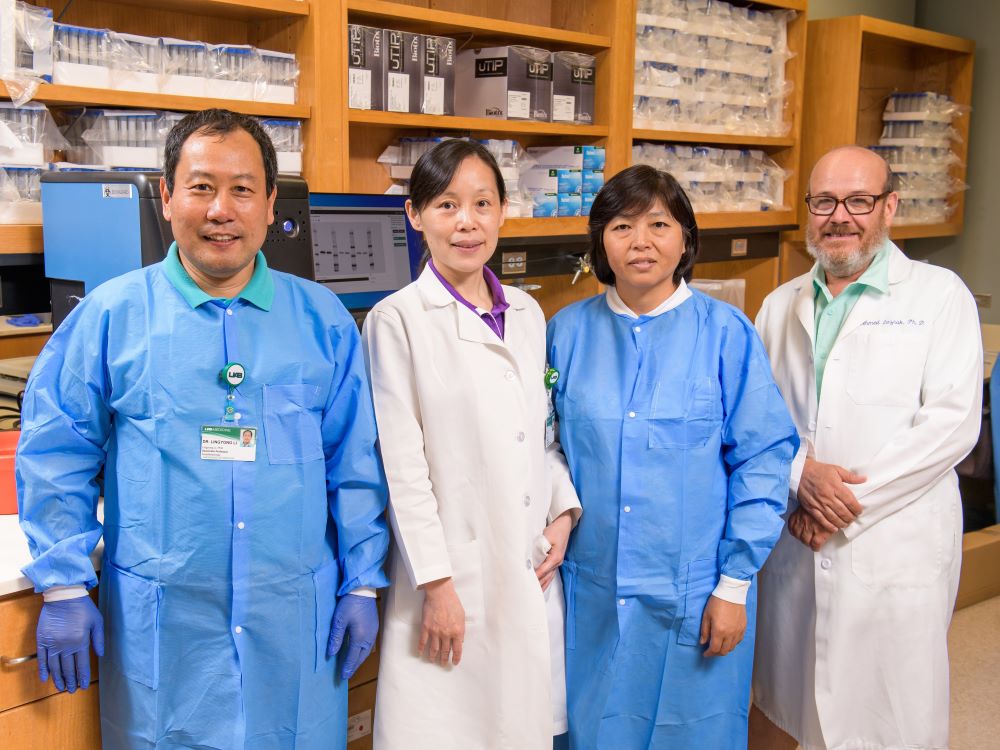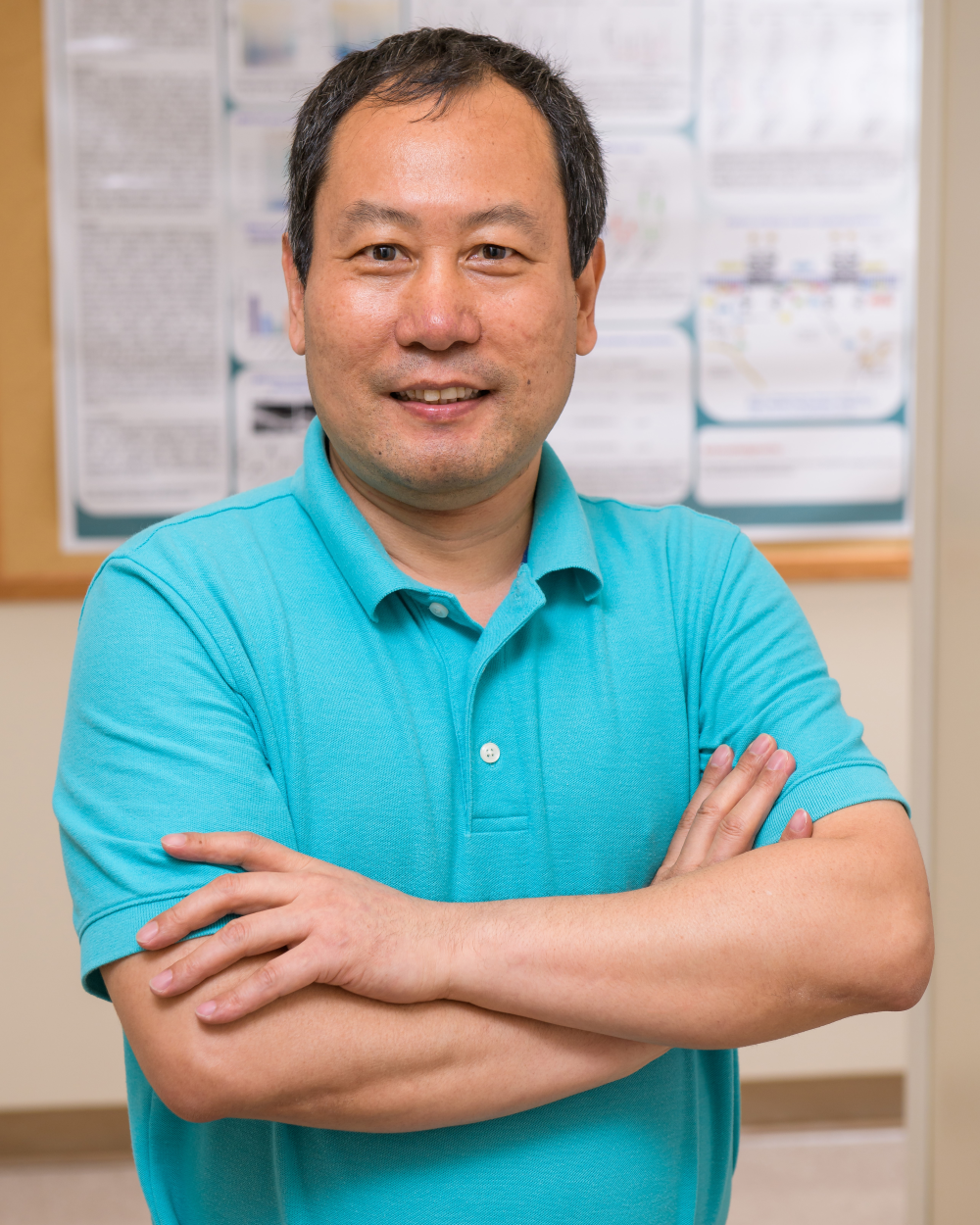 The Division of Molecular and Translational Biomedicine aims to “develop highly innovative research programs spanning from the bench to the bedside,” and this was fulfilled in 2022 when the department welcomed Lingyong Li, Ph.D., to the UAB family.
The Division of Molecular and Translational Biomedicine aims to “develop highly innovative research programs spanning from the bench to the bedside,” and this was fulfilled in 2022 when the department welcomed Lingyong Li, Ph.D., to the UAB family.
Li’s career in research spans multiple appointments at other prestigious academic medical centers, including postdoctoral associate in the Department of Pharmacology at Vanderbilt University, research investigator in the Department of
Anesthesiology and Perioperative Medicine at the University of Texas MD Anderson Cancer Center, and most recently, assistant professor in the Department of Neuroscience at the Baylor College of Medicine.
“The UAB Heersink School of Medicine consistently ranks among the nation’s very best academic medical centers for research, clinical care, and education,” Li says. “The intellectual environment of our department is rich with other extramurally funded investigators who are doing work that is complementary to my research here.”
Serving as associate professor and principal investigator for the Li Lab, Li’s primary interests include chronic pain and opioid use disorders. In 2021, the Centers for Disease Control and Prevention reported that 20.9% of adults in the United States—or 51.6 million people—experience chronic pain.
“Chronic pain is a major unmet health issue that impacts the quality of life. It is often comorbid with mood disorders—such as depression and anxiety—which intensify patients’ suffering and are clinically difficult to treat,” Li says. “Opioids remain the ‘gold standard’ for treating chronic pain. However, these treatments have harmful side effects, such as drug tolerance, addiction, and respiratory depression. My research focuses on synaptic, cellular, and neural circuitry mechanisms underlying chronic pain and opioid use disorders and their translational studies to develop more effective therapeutic strategies for chronic pain management.”
Li’s work has not gone unnoticed. His research is currently funded by multiple grants, including 2 R01s, 2 R21s, and 2 DoDs. Most recently, he was awarded the Heersink School of Medicine’s Featured Discovery for his study “TIAM1-mediated synaptic plasticity underlies comorbid depression-like and ketamine antidepressant-like actions in chronic pain,” which is published in The Journal of Clinical Investigation. The Li Lab, located in the Pittman Biomedical Research Building II at UAB, currently is seeking multiple positions for its research. Li has recruited five members—Na Xie, Ph.D.; Changqun Yao; Jennifer Magnusson, Ph.D., from the University of Michigan; Jun Li, Ph.D., from Baylor College of Medicine; and Zeinab Mehsein, Ph.D., from St. Joseph University of Beirut—in 2023.
Li credits Xie for her “great contributions to lab remodeling and experiment preparation” and says he also gets notable support from Dan Berkowitz, MB BCh; Sadis Matalon, Ph.D.; Kevin Harrod, Ph.D.; Jennifer DeBerry, Ph.D.; Timothy Ness, M.D., Ph.D.; and Ahmed Lazrak, Ph.D.
While Li has made remarkable progress in research regarding chronic pain and understanding molecular mediators that govern the activity across pain pathways, he says little is known about how pain information is transmitted and processed in the central nervous system. This will be the focus of future research (see The Future of Pain Research).
Li’s research is a true testament to bench-to-bedside research, and his empathic approach to alleviating the debilitating effects of chronic pain shows great promise for better patient outcomes in the future. “I’ve met a lot of chronic pain patients and know their suffering,” Li says. “As a scientist performing pain research, I thought I had the responsibility to do something to relieve patients’ suffering at UAB.”
PICTURED: Researchers in the Li Lab include (from left to right) Lingyong Li, Ph.D.; Na Xie, Ph.D.; Changqun Yao; and Ahmed Lazrak, Ph.D.
 The Future of Pain Research from Lingyong Li, Ph.D.
The Future of Pain Research from Lingyong Li, Ph.D.
Understanding how cellular heterogeneity and circuit organization work to process and convey pain information has long been considered one of the great challenges in the pain field. As the major research direction, we are using cutting-edge approaches—such as single-cell and spatial transcriptomics, cellular and circuit imaging, and genetic and viral manipulations—to understand spinal cell types with molecular, spatial, and morpho-electric annotations and illustrate how the specific cell types and neural circuits are organized and coordinated to code and relay pain information.
Our recent study identified the maladaptive plasticity mechanisms in spinal cord neurons as the neural substrate for opioid tolerance and hyperalgesia. We also utilize these approaches to illustrate how chronic opioid treatment gives rise to culprit cell types and neural circuits in the spinal dorsal horn that contribute to tolerance and illustrate how, over time, opioid use leads to culprit cell types and neural circuits in the brain contribute to the core symptoms of addiction.